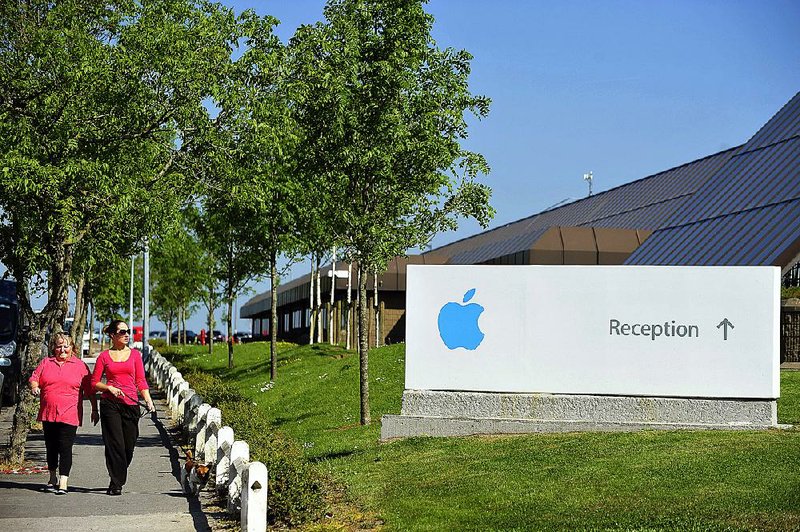Martin Morrissey sat in his bar just off Athenry's main square, swiped an imaginary iPad and explained what Apple Inc.'s decision to set up on the edge of the town in the west of Ireland means for his family.
Apple, based in Cupertino, Calif., said two weeks ago it will spend about $1 billion on a 1.7 million-square-foot data center in the middle of a forest just outside the town close to the Atlantic coast as part of its biggest investment in Europe. It will cover the equivalent of about 23 soccer fields.
"Everyone's afraid of educating your children and ending up driving them to airport and saying goodbye," said Morrissey, 43, who runs the Square Inn in the town. "I firmly believe now my children won't have to go the airport. They'll be able to stay here if they choose."
The area was best known as a byword for economic gloom, immortalized in a folk ballad about escaping famine in the mid-19th century. Now, it's a microcosm of a revival, with U.S. investment helping to return the economy to its 21st-century position as the fastest-growing in the euro-region after the worst recession on record during its debt crisis. Ireland is now among the world's leading destinations for U.S. investment, a report recently released in Dublin showed.
"The biggest company in the world is coming to the smallest village in the world," said Peter Feeney, a local farmer and councilor representing the biggest party in the governing coalition, Fine Gael.
The town, with a population of about 4,500, is dominated by the medieval Athenry Castle. On its other side, close to roads where farmers in flat caps drive tractors through fields enclosed by stone walls, lies Derrydonnell Woods.
Over the next three years, Apple will transform the site into its largest data center project in Europe, powering its iTunes store, app store and iMessage services, alongside a second facility in Denmark.
"Winning data centers allows Ireland to get into the head space of executives at these companies," said Leo Clancy, head of the technology division of IDA Ireland, the agency charged with winning foreign investment. "Then, when more job-intensive projects are being considered, we are in the mix."
About 300 people will be employed in the lifetime of the project, mostly in construction, as Apple adds to the 4,000 people it already employs elsewhere in Ireland.
U.S. companies have invested about $277 billion in Ireland since 1990, with their investment in the country exceeding Brazil, Russia, India and China combined, according to the American Chamber of Commerce Ireland. Surging exports will help Ireland's economy grow by about 3.5 percent this year, the European Commission forecast last month.
Apple follows in the footsteps of Google Inc. and Amazon.com Inc. in locating vast data centers, essentially large sheds filled with machines, in Ireland. The companies are drawn by a mix of factors, including the country's 12.5 percent corporate tax rate and Ireland's chilly, damp climate, which lowers the cost of keeping the centers cool.
On a March morning in Athenry, locals swapped stories about coping with the snow that had fallen in the previous days.
"You get a lot of cold wind off the Atlantic, every degree of cold you get is money in the pocket," said Feeney. "When we go out in the morning and the wind and rain is howling, well, at least, it's doing somebody good."
The downside for towns like Athenry is that data centers, once built, create relatively few jobs. The former market town was hit by the collapse of the construction industry in 2008. Property prices dropped by about 50 percent, and empty stores still pockmark the streets.
Traditionally a feature of life in Ireland's west, captured in the "Fields of Athenry" anthem adopted by the country's soccer and rugby fans, emigration restarted in the wake of the crash and ensuing rise in unemployment.
"We lost the youth, the pub-going people," said Morrissey. "It really hits home at Christmas, when they come home. You can see, he's gone, he's gone."
The hope for Athenry is that Apple becomes a calling card, drawing in other companies, according to Morrissey, who has an 8-year-old son and a 10-year-old daughter.
"Any other company wouldn't have this wow factor," said Morrissey. "I don't underestimate the power of Apple."
SundayMonday Business on 03/09/2015
